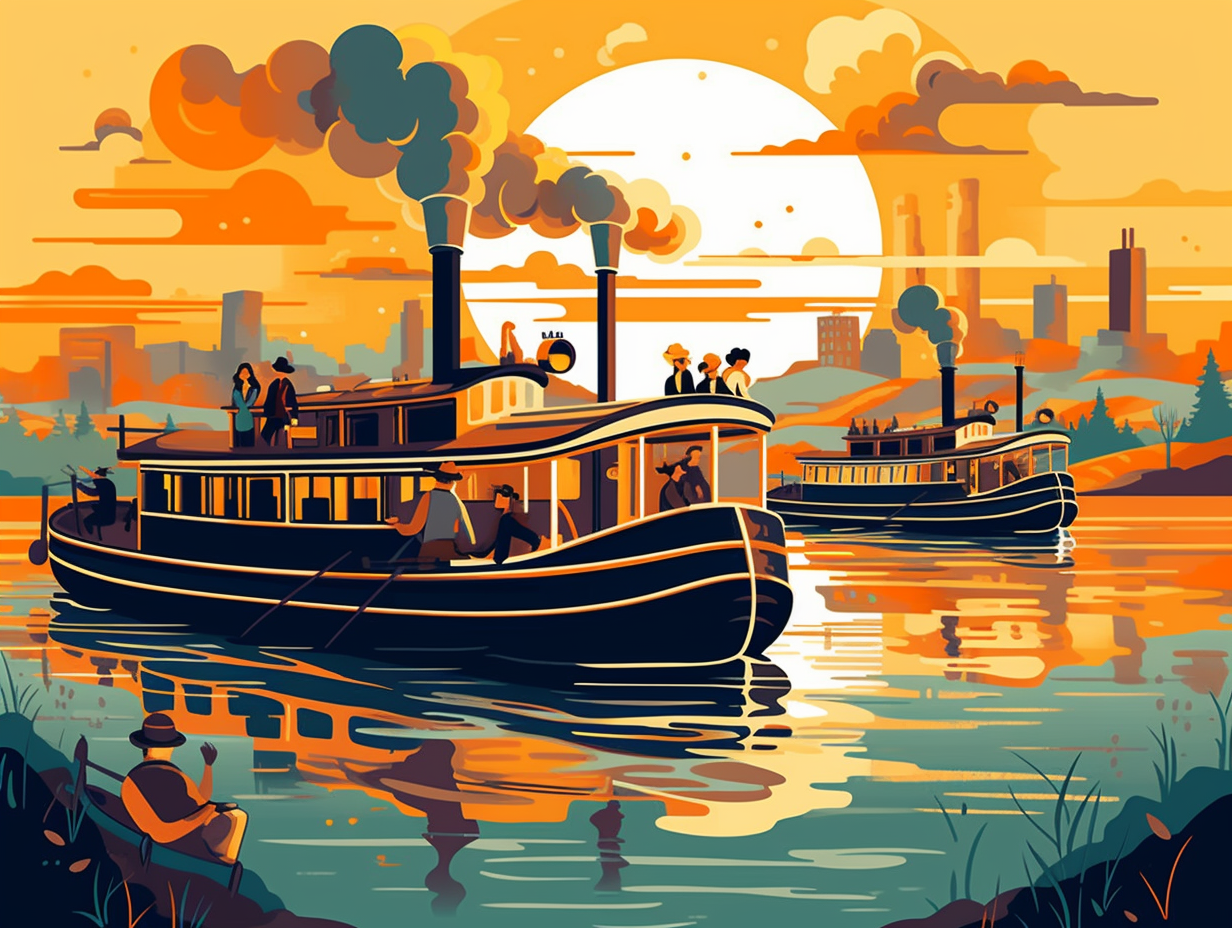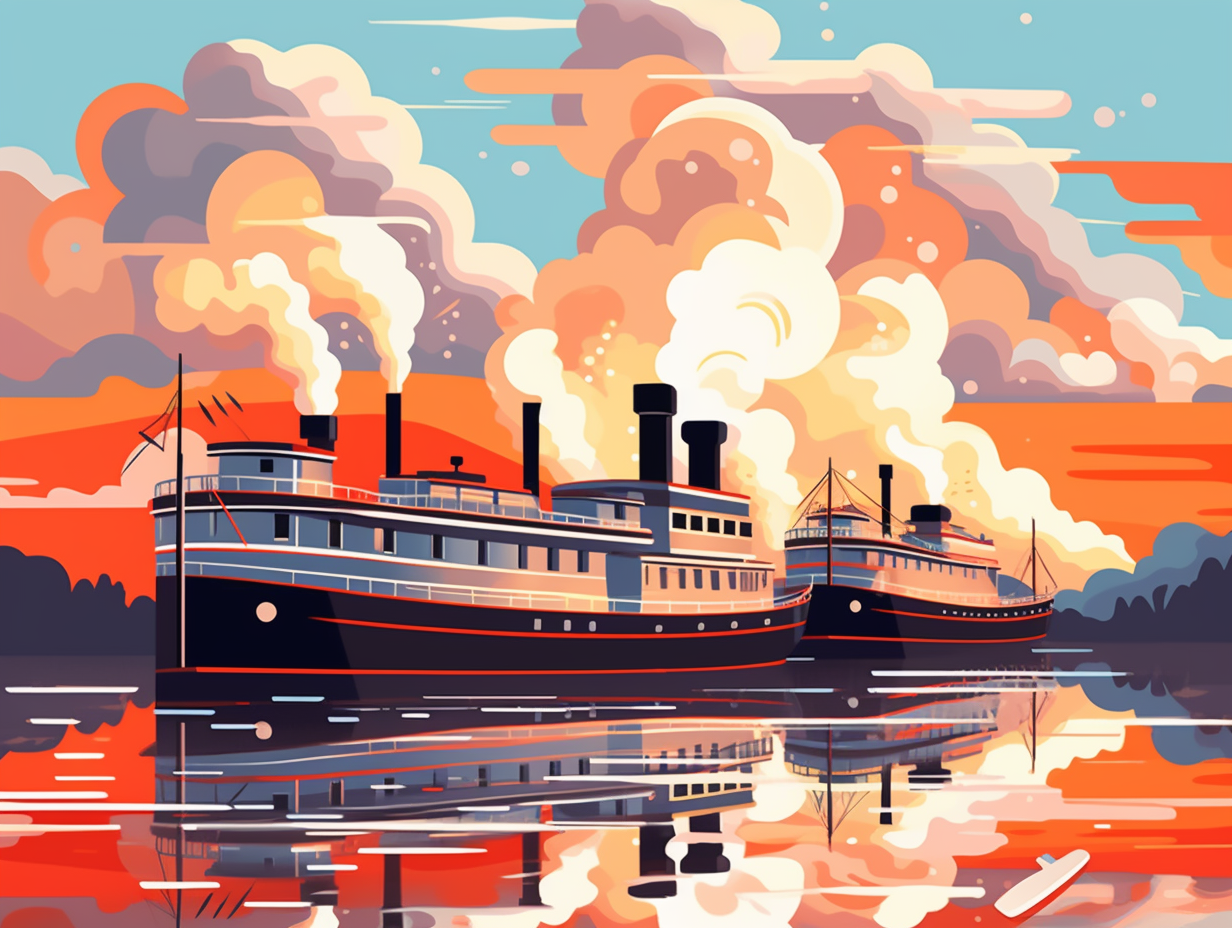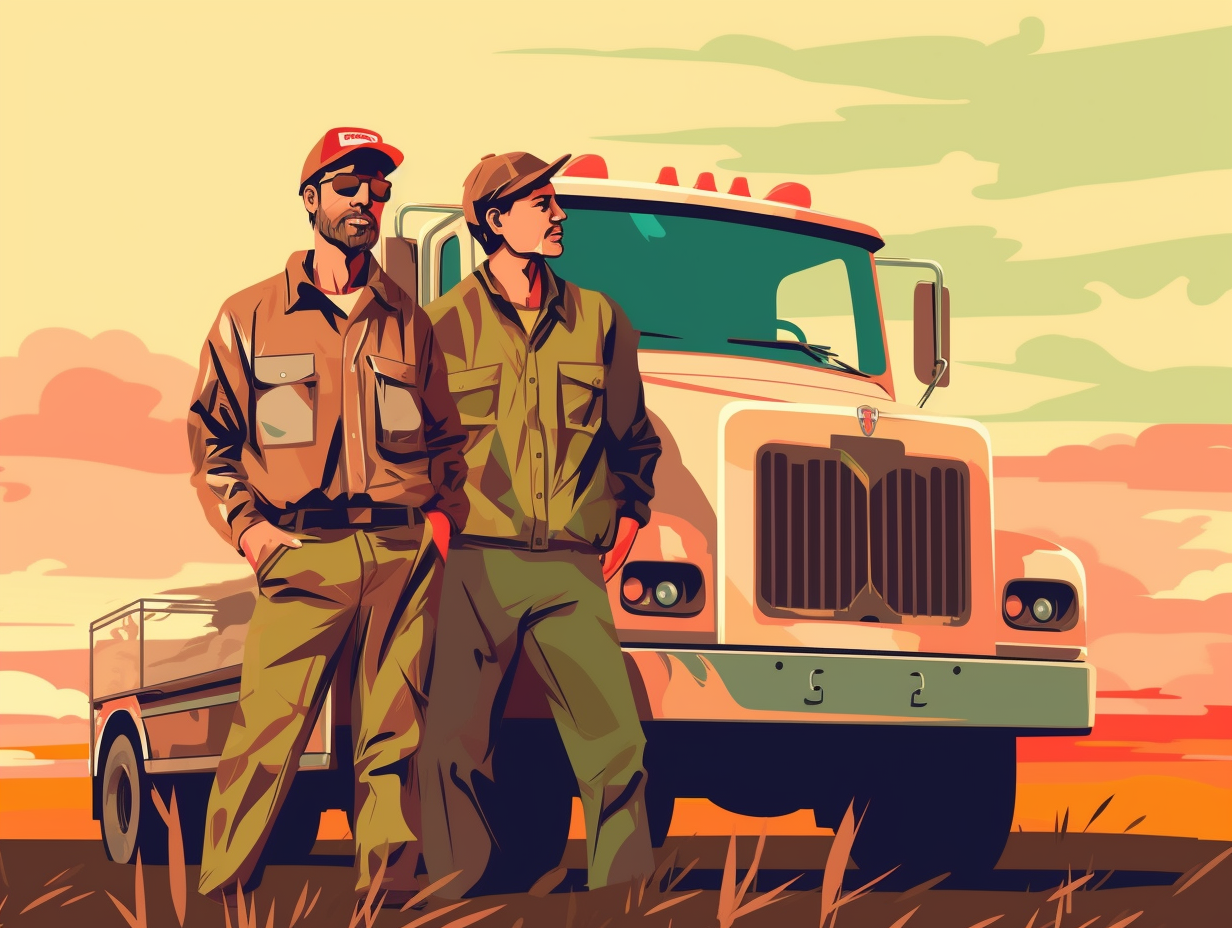9 Fascinating Steamboat Fun Facts: Explore the History and Curiosities of These Iconic Vessels!

1. Steamboats: America's Unsung Heroes
If steamboats could talk, they'd probably say, "I carried America on my back, and all I got was this lousy t-shirt": In truth, Robert Fulton's steamboat not only revolutionized transportation in the country, but also opened up vast new opportunities for exploration and resource exploitation, shaping the very fabric of the American continent.
Source => pbs.org
2. Navy Warships: Steamboats' Cousins
Picture this: a steam-powered marvel chugging along, part waterborne barge, part vintage locomotive, steering clear of cannonballs and weaving through waves like a maritime MacGyver; enter the steamboat! In the 18th century, the Charlotte Dundas emerged as the first practical steamboat with a steam engine connected to a rear-mounted paddle wheel for towing barges, later evolving to use propellers derived from the ancient Archimedes screw. The Royal Navy then adopted propellers for their warships to solve issues of paddle wheels being vulnerable to enemy fire and obstructing the main armament.
Source => usni.org

Did you know the Titanic's luxurious first-class swimming pool was no bigger than a classy kiddie pool? Discover its surprising restrictions and more fun facts!
=> Fun Facts about Boats
3. Belle of Louisville: The Singing Steamboat
Ahoy, bell-ringers and steamboat enthusiasts: Did you know that the Belle of Louisville is a singing boat?! You see, her melodious Roof Bell doesn't create chart-topping tunes, but her musical rings are crucial when it comes to crew communication during emergencies. The closer you listen, the more the pattern of rings reveals what the captain's intentions are, keeping the boat and its passengers safe and secure. Don't let its antique exterior fool you - this tuneful talent remains in perfect pitch today on the Belle.
Source => education.ket.org
4. Henry Shreve: Steamboat Traffic Cop
Before lumberjacks and their catchy tunes entered the mainstream, Mother Nature tried her hand at log jams: The Great Raft, a colossal barricade made of logs, hindered steamboat navigation on the Red River until Henry Shreve heroically cleared the way, opening new trade and transport opportunities along the riverbanks.
Source => okhistory.org

5. Steamboat Races: The Real Fast and Furious
Back in the day, steamboats were furious speed demons, racing with reckless abandon and the spirit of Vin Diesel coursing through their steam-powered engines: This resulted in high-stakes races, which often led to dangerous accidents and eventually prompted Congress to pass Steamboat Acts in 1838 and 1852, regulating river safety and tempering their need for speed.
Source => howardsteamboatmuseum.org
6. Snags: Steamboats' Arch-Nemesis
Watch out for rogue lumberjacks and sneaky waterlogged trees: Snags, fallen trees submerged in rivers, were the leading cause of steamboat accidents in Arkansas until 1849, accounting for three-fifths of all mishaps and resulting in a whopping 96 steamboat wrecks and at least 48 tragic deaths.
Source => encyclopediaofarkansas.net
7. SS Sultana: Unfortunate Overcrowding
When the SS Sultana played a game of "how many Civil War soldiers can you fit in a steamboat," it was a flabbergasting display of nautical tomfoolery: However, behind this joke lies a tragic fact, as the overcrowding of the vessel led to a catastrophic boiler explosion in 1865, taking the lives of over 1,700 passengers, most of whom were Union soldiers recently freed from Confederate prisons.
Source => guides.loc.gov
8. Pyroscaphe: Steamboats' Dramatic Debut
Talk about a maiden voyage gone awry: it was steamboats gone wild back in 1783, when Marquis de Jouffroy d'Abbans's creation, the Pyroscaphe, dipped its paddlewheel toes into the waters of the river Saône in France. Forget steamboat bluffs and riverboat gamblers, this steamship was an icon in itself: a pivotal moment in steamboat history, it strutted its double-acting steam machine, sidewheels, and hull despite a few technical hiccups – while managing to avoid hogging the limelight by bursting into a cloud of errant steam.
Source => en.wikipedia.org
9. Mark Twain: Steamboat Captain Turned Author
Before penning his legendary novels, Mark Twain dabbled in steamboat lingo and dipped his toes (or rather, fathoms!) into the majestic world of Mississippi River piloting, to better "fathom" the depths of America's literary scene: Twain's alias is derived from a steamboat term for water that's two fathoms (12 feet) deep, indicating safe passage for a steamboat, and his time as a licensed steamboat pilot brought him up close and personal with the vessels, inspiring his classic works like "Life on the Mississippi."
Source => americaslibrary.gov
Related Fun Facts




















